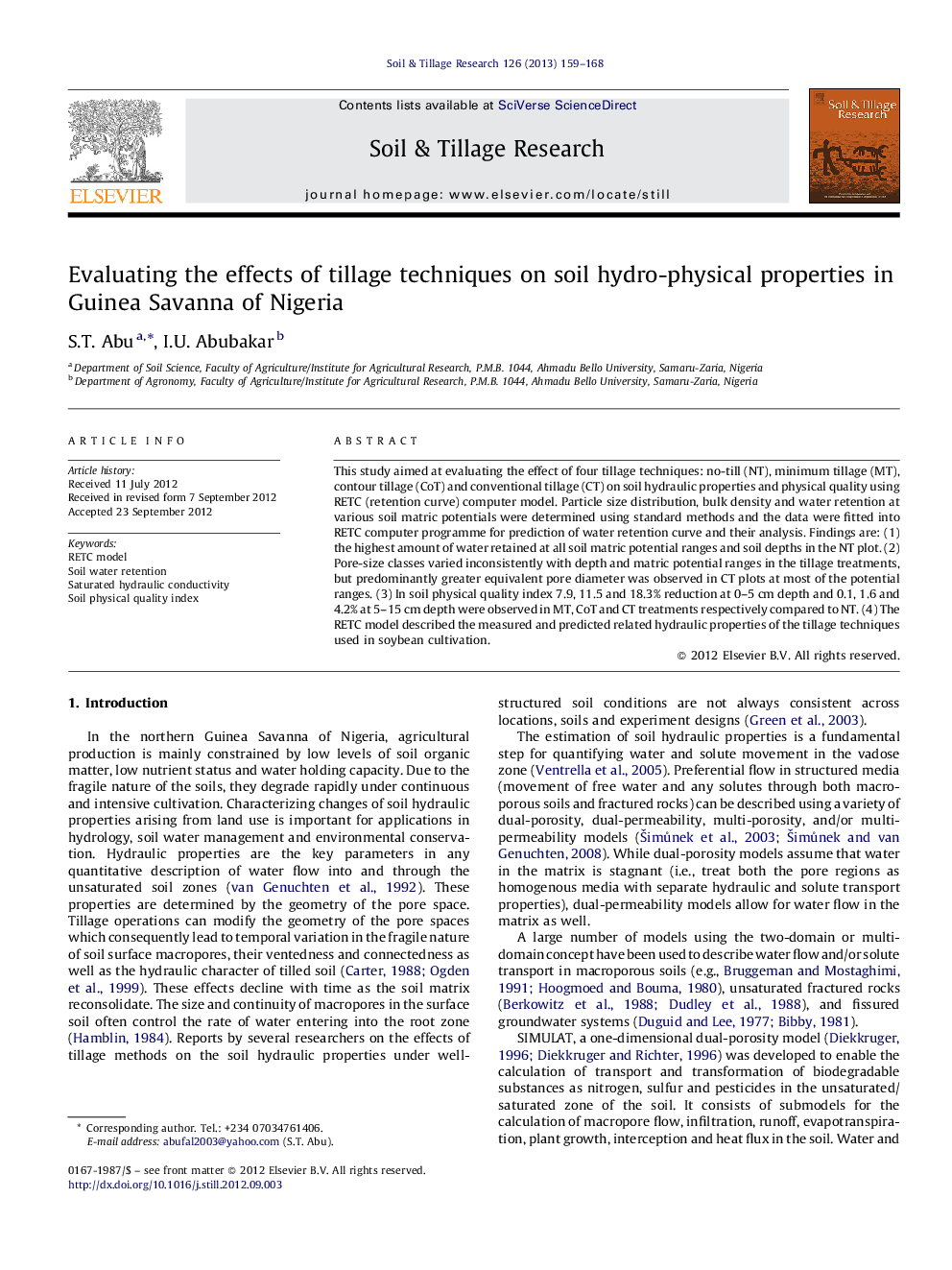| Article ID | Journal | Published Year | Pages | File Type |
|---|---|---|---|---|
| 305977 | Soil and Tillage Research | 2013 | 10 Pages |
This study aimed at evaluating the effect of four tillage techniques: no-till (NT), minimum tillage (MT), contour tillage (CoT) and conventional tillage (CT) on soil hydraulic properties and physical quality using RETC (retention curve) computer model. Particle size distribution, bulk density and water retention at various soil matric potentials were determined using standard methods and the data were fitted into RETC computer programme for prediction of water retention curve and their analysis. Findings are: (1) the highest amount of water retained at all soil matric potential ranges and soil depths in the NT plot. (2) Pore-size classes varied inconsistently with depth and matric potential ranges in the tillage treatments, but predominantly greater equivalent pore diameter was observed in CT plots at most of the potential ranges. (3) In soil physical quality index 7.9, 11.5 and 18.3% reduction at 0–5 cm depth and 0.1, 1.6 and 4.2% at 5–15 cm depth were observed in MT, CoT and CT treatments respectively compared to NT. (4) The RETC model described the measured and predicted related hydraulic properties of the tillage techniques used in soybean cultivation.
► Effect of tillage on soil hydrophysical properties was evaluated using RETC. ► The RETC model is suitable for predicting soil hydraulic properties of the soil. ► The soil under no-till had the largest water content at all the studied depths. ► Conventionally tilled plots had greater equivalent pore diameter at most ranges of soil matric potential. ► Tillage induced 0.1–18.3% reduction in soil physical quality compared to no-till.
